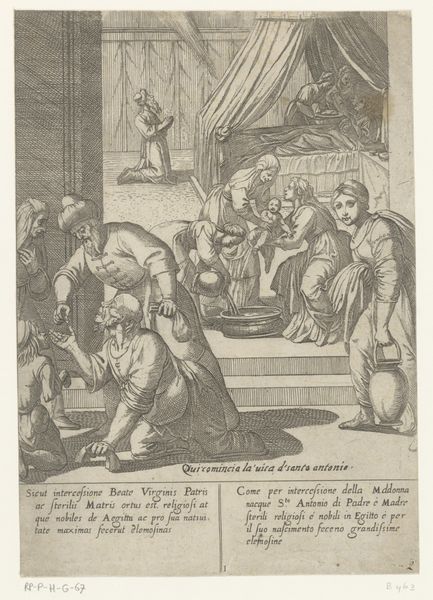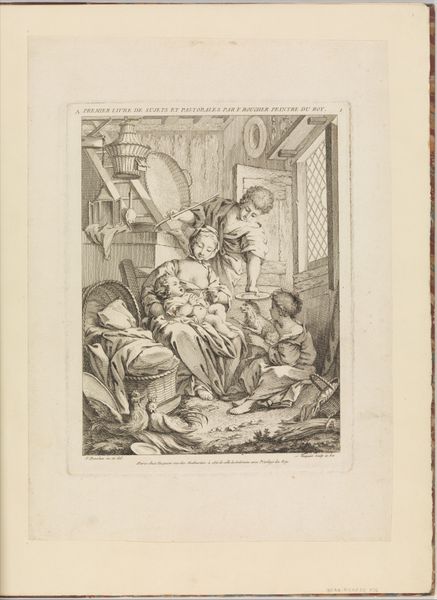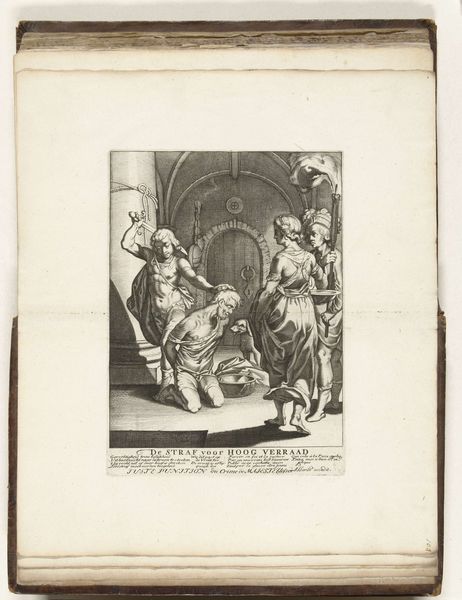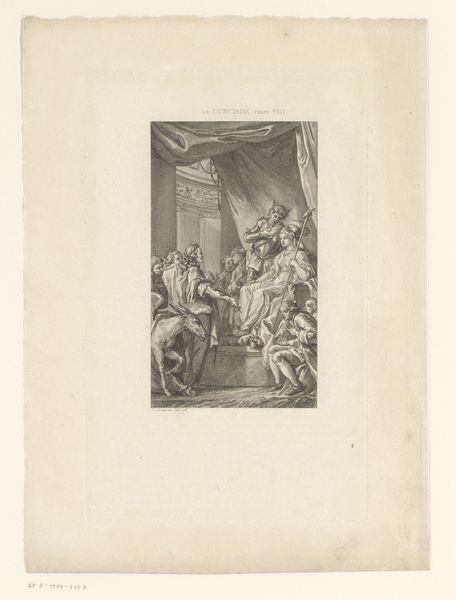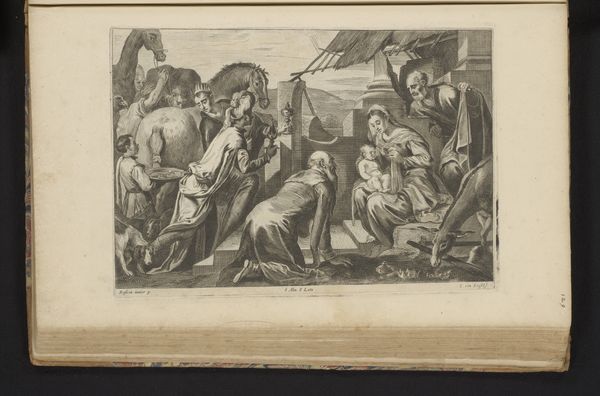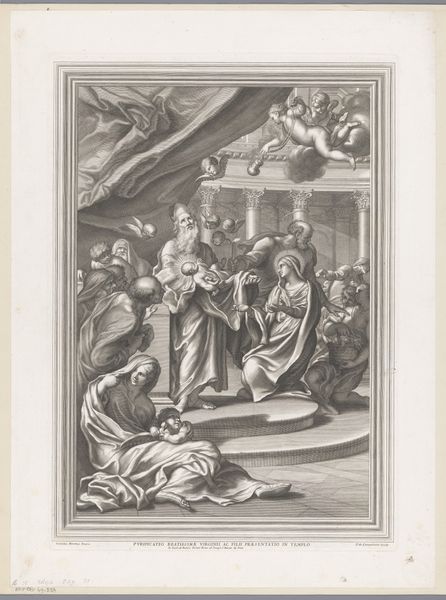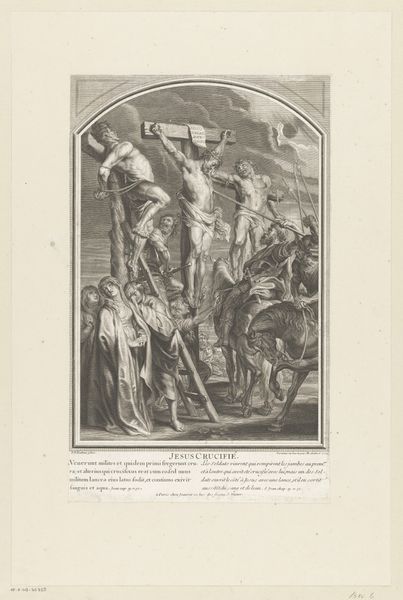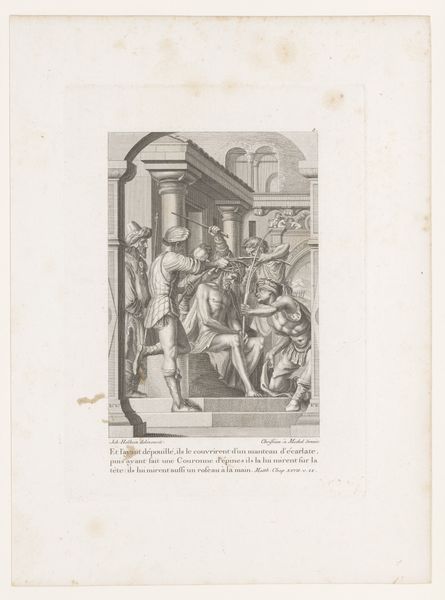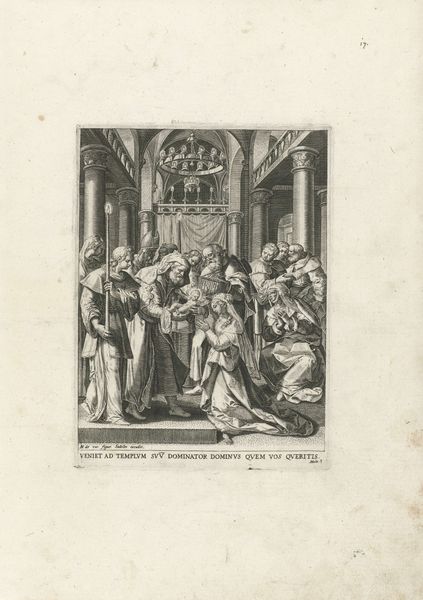
The Virgin and Child seated on a pedestal at center, to the right a monk offers a flower, and in the foreground a saint kneels before them while Saint Lawrence rests his hands on a gridiron; from 'Recueil d'estampes d'après les plus beaux tableaux et d'après les plus beaux desseins qui sont en France, Cabinet Crozat' after a drawing by Pietro Antonio de' Pietri 1724 - 1734
0:00
0:00
print, engraving
#
baroque
# print
#
history-painting
#
italian-renaissance
#
engraving
Dimensions: Sheet: 21 in. × 15 5/16 in. (53.4 × 38.9 cm) Plate: 16 9/16 × 9 9/16 in. (42 × 24.3 cm)
Copyright: Public Domain
This print, now in the Metropolitan Museum of Art, was created by Anne Claude Philippe Caylus after a drawing by Pietro Antonio de' Pietri. Notice how the composition arranges the figures within a shallow, arched space. The Virgin and Child are elevated at the center, flanked by saints in various attitudes of devotion. The use of line is particularly striking. Fine, closely spaced lines create areas of shadow, while open spaces suggest light, giving the figures volume and depth. Textural contrasts are subtle, achieved through variations in hatching and cross-hatching, distinguishing fabrics from skin, stone, and the gridiron of Saint Lawrence. The print engages with Baroque ideals, yet it also reveals a moment of transition. The clarity of line anticipates the Neoclassical focus on form and contour. How does this delicate balance of light and shadow, and the arrangement of figures, evoke both a sense of spiritual awe and a subtle shift toward a more rational aesthetic? The image invites ongoing interpretation, demonstrating the enduring power of form to convey meaning.
Comments
No comments
Be the first to comment and join the conversation on the ultimate creative platform.



